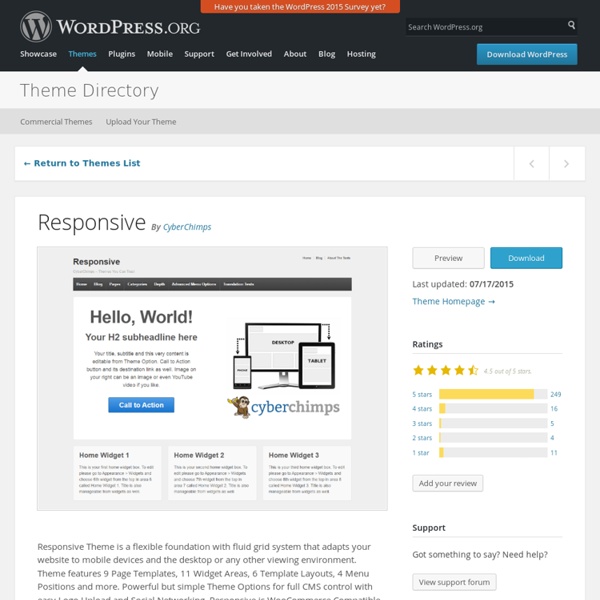



WordPress plug-ins: 16 handige basis plug-ins voor starters | Zeeën van tekstideeën Ben je net gaan werken met WordPress? Dan heb je misschien al eens meegemaakt dat je iets met het programma wilt doen, maar dat het niet kan. Je wilt bijvoorbeeld een nieuwsbrief gaan versturen. Of een contactformulier maken waarmee je websitebezoekers zich kunnen inschrijven voor een evenement. De kans is dan groot dat je niet de eerste bent die zoiets wilt. Wat is een plug-in eigenlijk? Een plug-in is een uitbreiding van een programma dat ervoor zorgt dat het programma meer mogelijkheden heeft. Omdat WordPress zo veel gebruikt wordt, zijn er wereldwijd duizenden mensen die praktische plug-ins ontwikkelen. Plug-ins maken WordPress enorm flexibel Plug-ins maken van WordPress een enorm krachtig en flexibel contentmanagementsysteem. De lijst is overigens gewoon een opsomming en niet een of ander top 10-lijstje. 16 basis WordPress-plug-ins Oké, hier dan het lijstje met de 16 praktische WordPress-plug-ins die je zou kunnen gebruiken bij het maken van je website. All in One SEO Pack.
15 beste free responsive WordPress-themes van 2012 | Zeeën van tekstideeën Hoe zou je het vinden om meteen vijftien sterke WordPress-themes te vinden die je helpen om je onderneming en blog tot een succes te maken? Met vormgeving die er niet alleen mooi uitziet, maar die ook de inhoud van je website goed tot zijn recht laat komen? Alsjeblieft! Vijftien gratis onweerstaanbare themes op een rij gezet. Alle themes zijn (redelijk) recent uitgebracht. 1. Wow! Trefwoorden: free, bloggingtheme, magazinetheme 2. Hatch is ontwikkeld door Galin Simeonov. Trefwoorden: free, fotografietheme, portfoliotheme 3. Oxygen is een minimalistisch responsive theme voor je online magazine. Trefwoorden: free, magazinetheme 4. Galin Simeonov is ook de bedenker van Origin, een simpel en elegant bloggingtheme met veel witruimte. Trefwoorden: free, bloggingtheme 5. Galin Simeonov heeft recent nog een simpel en elegant toptheme uitgebracht: Ascetica. Trefwoorden: free, fotoblogtheme, portfoliotheme, creative theme 6. Yoko is nog zo’n prachtig gratis responsive WordPress-template. 7. 8. 9. 11.
Best Free WordPress Themes Gallery Updated: March 12, 2014 It has been awhile since I’ve created one of our popular WordPress theme galleries, so I decided it was time to build a new one. In the past I’ve always taken the approach of trying to remove any personal bias and just display the WordPress themes and demo/download information in a manageable way so that the reader can choose their favorite themes that they’d like to use. This time I decided to comb the internet looking for my personal favorite free WordPress themes and display them below in a convenient format. This theme gallery is broken down into the following categories (click the link to be taken to the section you are looking for): This post is updated regularly, so if you find you are often in the market for a free WordPress theme, bookmark this post and check back regularly! Best 2-Column Free WordPress Themes Vintage Theme Source | Download | Demo Blues Theme Shades of Blue Theme Source | Download | Demo Typebased Theme Source/Demo | Download WP Freemium Theme
Nieuw WordPress Twenty Twelve theme nu al te downloaden WordPress levert ons gedurende de afgelopen jaren trouw elk jaar een nieuw standaard theme. Dit is ooit ontstaan omdat er vrij veel kritiek kwam vanuit de gebruikers op het destijds verouderde standaard theme. Sinds 2010 is daarom met het Twenty Ten theme een nieuwe koers ingeslagen. Wat je van het ontwerp vindt is altijd persoonlijk, maar ik vind het er wel weer fris en opgeruimd uit zien. Wat het nieuwe theme bijzonder maakt is dat het de eerste keer is dat er een apart template voor de homepage wordt meegeleverd. Het theme is responsive en zal er zowel goed uit zien op mobiele telefoons, tablets en apparaten met een Retina beeldscherm (met zeer hoge resolutie) zoals de Apple iPad3. Wat ook gewijzigd is, is dat je na activatie van het theme geen standaard header meer te zien krijgt. Meer informatie over het Twenty Twelve theme vind je op de WordPress site. Nuttige informatie?
WordPress spam voorkomen met Spam Free WordPress | Wordpress Beveiligen WordPress spam is en blijft een lastig en ongewenst gegeven. Zoals elders omschreven in dit blog kun je met behulp van Askimet ervoor zorgen dat er (vrijwel) geen spam meer op je blog zelf terecht komt maar enkel in je spam folder. Toch blijft het telkens legen van je spam folder een vervelende handeling, gevoelsmatig wil je gewoon dat die spammers je blog niet bereiken. Spam die wél op je blog terecht komt is slecht voor je SEO, vervelend (en soms gevaarlijk) voor je lezers en toont geen professionaliteit. Downloaden en installeren Spam Free WordPress is direct te downloaden via de WordPress Plugin Directory of via het <Plugin><New Plugin> menu in je WordPress website. Nadeel van het ‘bestellen’ van deze Key is dat je flink wat persoonlijke gegevens dient in te voeren; Als je wat creatief nadenkt besef je dat enkel je naam en emailadres dient te kloppen omdat daar de key naar toe gestuurd wordt. Instellen en configureren Werking van Spam Free WordPress Eindoordeel en advies
WordPress Developer Resources | Official WordPress Developer Resources